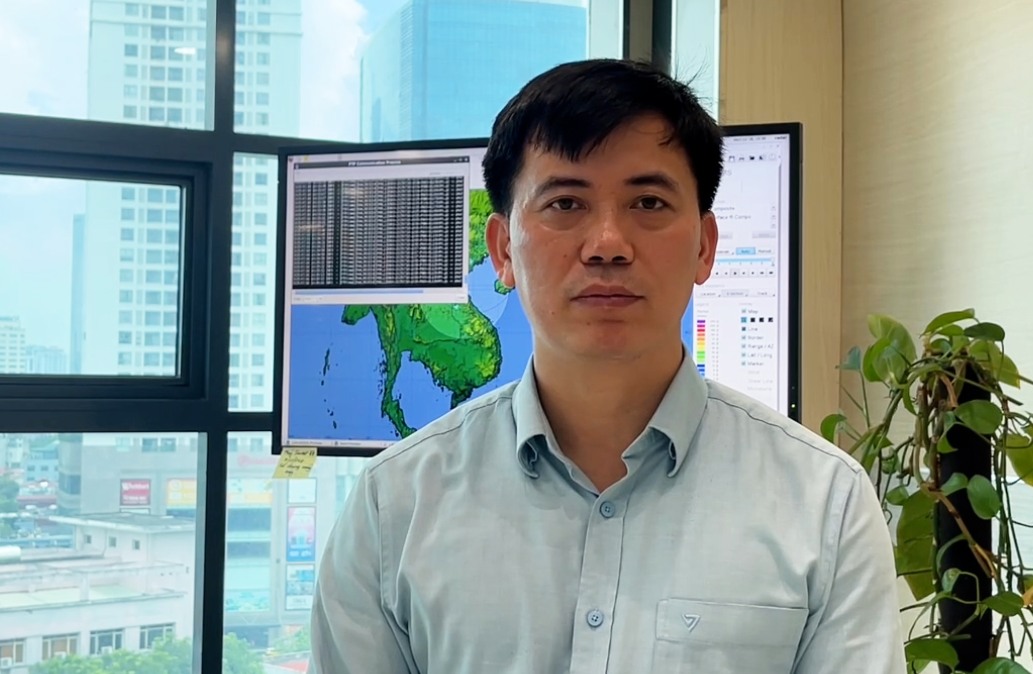According to the National Center for Hydro-Meteorological Forecasting, at 4:00 p.m. on July 16, the center of the tropical depression was at about 14.2 degrees north latitude; 130.1 degrees east longitude, in the sea east of the Philippines. The strongest wind near the center of the tropical depression is level 6 - 7 (39 - 61km/h), gusting to level 9. The tropical depression is moving west-northwest at a speed of about 15km/h.

Mr. Nguyen Van Huong - Head of Weather Forecast Department, National Center for Hydro-Meteorological Forecasting said that in the next 24 hours, the tropical depression is likely to strengthen into a storm and continue to move west-northwest at a speed of 15 - 20km/h.
At 4:00 p.m. on July 17, the center of the storm was at about 15 degrees north latitude; 126.5 degrees east longitude, in the sea northeast of the Philippines. The strongest wind near the storm center is level 8, gusting to level 10.
It is forecasted that in the next 48 hours, the storm will move northwest at a speed of about 20 km/h and is likely to strengthen. At 4:00 p.m. on July 18, the center of the storm was at about 17.2 degrees north latitude; 123 degrees east longitude, in the sea east of Lu Dong Island (Philippines). The strongest wind near the storm center is level 10, gusting to level 12.
"In the next 48 to 72 hours, the storm will move mainly in a west-northwest direction at a speed of 20 - 25km/h and is likely to strengthen" - Mr. Huong added.
According to Mr. Huong, it is forecasted that when it strengthens into a storm in the northern area of Luzon Island (Philippines), this storm will likely overcome the northern area of Luzon Island (Philippines) and enter the northern East Sea on the weekend (around July 19 - 20.
"It is likely that when it strengthens into a storm and moves into the East Sea, the storm may move west-northwest. However, the tropical depression is still in the forming stage and has not yet become a storm. The dominating atmospheric systems such as the southwest monsoon, subtropical high pressure... are still unstable, causing the trajectory and development intensity of this system to have many potential fluctuations, which can change" - Mr. Huong analyzed.
According to the Head of the Weather Forecast Department, if the storm scenario after entering the East Sea continues to maintain its northwest direction, this storm could affect the mainland of Vietnam.
"From around July 21 to 25, it is necessary to be on guard against the risk of a widespread heavy rain in the Northern region and the provinces from Thanh Hoa, Nghe An, Ha Tinh due to the circulation of this storm" - Mr. Huong said.
Mr. Huong recommended that the initial impact that needs attention is the influence of the tropical convergence zone connecting with the circulation of tropical depressions or storms (likely to move into the East Sea), in the East Sea area (including Hoang Sa specialties and Truong Sa specialties) with strong winds, high waves, and rough seas from July 19 to 20.
"The development of rain is still very complicated, depending on the direction of movement and the impact of the tropical depression or storm" - Mr. Huong said.
The National Center for Hydro-Meteorological Forecasting recommends that authorities, people and forces operating at sea regularly monitor updates, proactively take preventive measures and respond promptly to any possible situations.
The meteorological agency is closely monitoring and will promptly update in the next bulletins to serve the direction and response of all levels and sectors.











